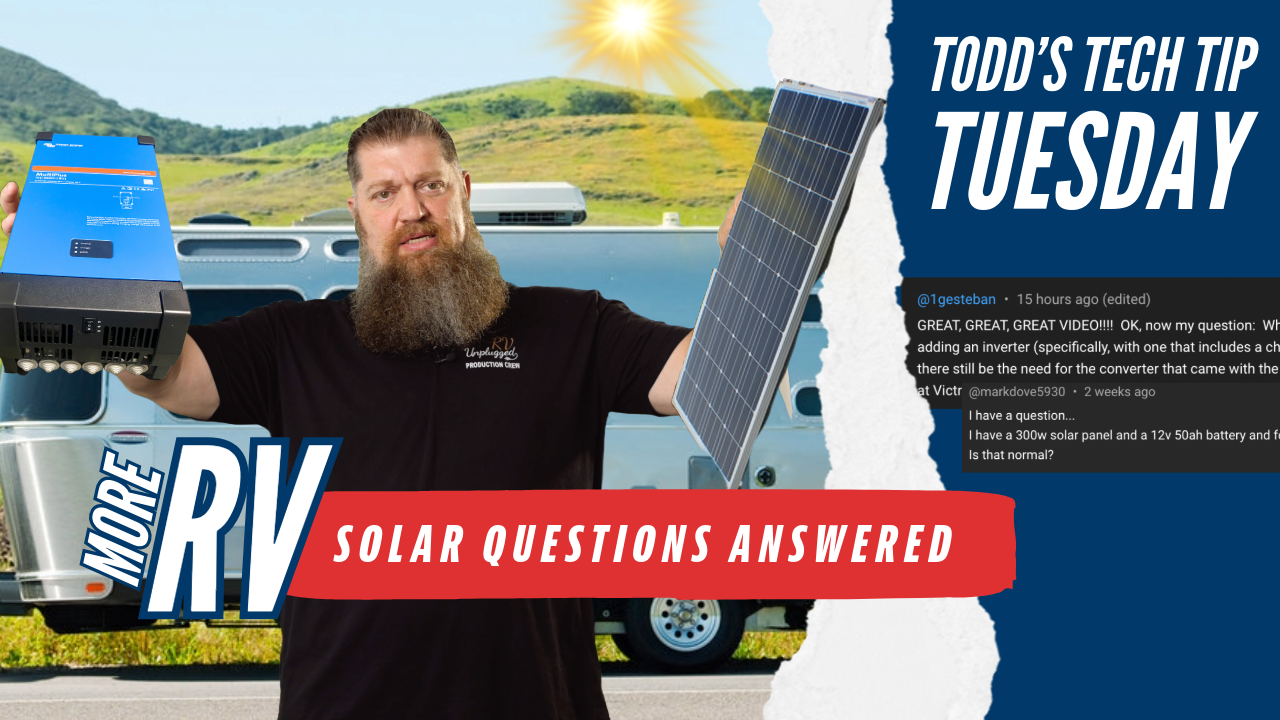Get your RV Technician Certification in as little as 5 weeks!

Solar Inverters and Converters: Do You Still Need Both?
Today, I’m addressing some of the questions you’ve asked about solar setups in your RV. Let’s dive into the first question from one of our viewers.
Question 1: Do You Still Need a Converter with an Inverter Charger?
Question: When upgrading your RV travel trailer by adding an inverter, specifically one that includes a charger and an automatic transfer switch, will there still be a need for the converter that came with the travel trailer?
Answer: It all depends on the type of inverter charger you have. Most modern inverters, especially those designed for full-house use, can run everything in your RV. These typically include brands like Victron, Go Power, and Renogy.
- Inverter and Charger Combo: If you choose an inverter that includes a charger (like the Victron MultiPlus or Quattro series), you won’t need the converter anymore. These units handle both inverting (DC to AC) and charging (AC to DC).
- Simple Inverter: If it’s just a simple inverter without a charger, then you still need your converter.
To determine whether you need to keep your converter, check if your inverter has an AC input and if it specifies “charger” on the data plate. If it does, it will manage both tasks, making the converter unnecessary.
However, you might still choose to leave the converter in place as a backup. Personally, I prefer maintaining the 12V system as it is and adding the inverter system on top of it. This ensures you have a backup system and more flexibility, although it does add to the space and weight considerations.
Question 2: Solar Panel Not Charging as Expected
Question: I have a 300W solar panel and a 12V 50Ah battery, but it doesn’t seem to charge more than 100W. Is that normal?
Answer: To troubleshoot this issue, we need to consider several factors:
- Solar Controller Size: The solar controller is crucial as it steps down the high-voltage DC from the solar panel to the battery voltage and increases the amperage. The size of your solar controller will determine how much power can be transferred from the panel to the battery.
- If your controller is rated for a lower amperage, it might be limiting the power transfer. For example, a 15A controller at 12V can only handle up to 180W efficiently.
- Sunlight and Panel Efficiency: Ensure your solar panel is receiving optimal sunlight. Shadows, dirt, or suboptimal positioning can significantly reduce the power output.
- Battery State: The state of your battery also plays a role. If your battery is nearly full, it will naturally accept less power, often reducing the charging rate. If the battery is close to being full, it might be in float mode, where only a small amount of power is needed to maintain the charge.
- If your battery is demanding more power (for instance, if it’s partially discharged), you should see higher wattage provided your solar controller and sunlight conditions are adequate.
By examining these factors—controller size, sunlight conditions, and battery state—you can better understand why your solar panel might not be providing the expected power.
Conclusion
Understanding your RV’s solar setup can be complex, but knowing how inverters, chargers, and controllers work together can simplify your maintenance and upgrades. Whether you’re adding an inverter or troubleshooting your solar panel’s efficiency, these insights should help you make informed decisions.\
Get Registered Today!
Talk to a student advisor to learn more!
